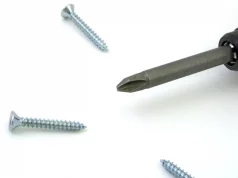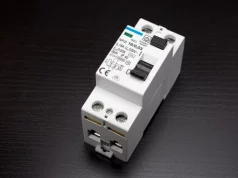In modern kitchens, the microwave has become an indispensable appliance, saving us time and effort in meal preparation. However, the frustration of a microwave tripping the circuit breaker is an all-too-common occurrence that can disrupt our daily routines. When your microwave causes your circuit breaker to trip, it’s not only inconvenient but also potentially hazardous. In this comprehensive guide, we will walk you through the steps to diagnose and fix the issue, ensuring your microwave functions safely and efficiently once more. So, let’s dive in and learn how to troubleshoot and resolve the problem of a microwave tripping the circuit breaker.
How To Fix Microwave Tripping Circuit Breaker?
Fixing a microwave that keeps tripping the circuit breaker can be a multi-step process, and it’s essential to approach it carefully to ensure safety. Here’s a detailed guide on how to address this issue:
Prioritize Safety: The first and foremost step is ensuring your safety. Turn off or unplug the microwave and locate the circuit breaker that’s been tripped. In your electrical panel, the tripped breaker will be in the “off” position or between “on” and “off.” Gently reset it to the “on” position.
Inspect the Power Cord: Examine the microwave’s power cord meticulously. Look for any visible damage, such as frayed wires, exposed conductors, or burn marks. A damaged power cord can be a common cause of circuit breaker trips. If you find any issues, replace the cord with a new one compatible with your microwave model. Ensure the new cord is the appropriate type and gauge for your appliance.
Test with a Different Outlet: Sometimes, the problem might not be with the microwave itself but rather the electrical outlet it’s plugged into. To rule out this possibility, plug the microwave into a different outlet on a separate circuit. If the microwave operates without tripping the breaker in the new outlet, it’s a sign that the original outlet might be faulty or overburdened. You can further confirm this by testing another appliance in the original outlet to see if it trips the breaker as well.
Inspect Internal Components: If the circuit breaker continues to trip, there may be internal issues with the microwave. This step should only be attempted by individuals with experience in appliance repair and electrical work, as it involves potentially dangerous situations. Unplug the microwave and, if the manufacturer’s guidelines allow, remove the outer cover. Inside, carefully inspect the wiring and connections for any loose wires or visible damage. Ensure that all connections are secure and intact. This advanced step should only be attempted by those with the necessary skills and understanding of electrical safety.
Seek Professional Assistance: If none of the above steps resolve the problem, it’s advisable to seek professional help. A qualified electrician or an appliance repair technician can diagnose and fix more complex internal issues within the microwave or identify problems within your home’s electrical system. They have the tools and expertise to ensure a safe and thorough repair.
Preventive Measures: To prevent future circuit breaker trips, consider designating a dedicated circuit for your microwave. Overloading circuits by running too many high-wattage appliances simultaneously can lead to tripped breakers. Regularly cleaning and maintaining your microwave, particularly the internal components, can help prevent dust buildup and potential electrical problems.
What Causes A Microwave To Trip The Circuit Breaker?
A microwave can trip the circuit breaker for several reasons, and understanding these causes is crucial to resolving the issue. Here are the common reasons why a microwave might trip the circuit breaker:
Overloading The Circuit:
Microwaves draw a significant amount of electrical power when in use, especially if they are high-wattage models. If the microwave runs on the same electrical circuit as other high-wattage appliances, such as toasters, ovens, or air conditioners, it can overload the circuit. When the electrical demand surpasses the circuit’s capacity, the breaker trips to prevent overheating or a potential fire hazard.
Faulty Or Damaged Microwave:
A malfunctioning microwave can cause electrical issues, leading to circuit breaker trips. Internal components, such as the magnetron (which generates microwave radiation), the high-voltage capacitor, or the diode, may develop faults or short circuits. These issues can result in excessive power draw, causing the circuit breaker to trip for safety reasons.
Worn Power Cord Or Outlet:
A damaged or frayed power cord on the microwave itself can lead to electrical problems. Likewise, if the electrical outlet where the microwave is plugged in is damaged or faulty, it can cause issues. Faulty wiring connections or loose wires can create a short circuit that trips the circuit breaker.
Shared Circuits:
In some older homes, multiple outlets and appliances may share the same circuit. If several high-wattage appliances are used simultaneously on the same circuit, it can overload the circuit and cause the breaker to trip.
Circuit Breaker Issues:
Sometimes, the circuit breaker itself may be faulty. Over time, circuit breakers can degrade or wear out, becoming more sensitive to electrical surges. If the breaker is old or malfunctioning, it may trip more frequently than necessary.
Other Electrical Problems:
There may be underlying electrical issues within your home’s wiring system contributing to the problem. These issues can include loose or damaged wires, poor connections, or inadequate circuit capacity for the used appliances.
Tips For Preventing Future Circuit Breaker
Preventing future circuit breaker trips is essential to maintain the safety and reliability of your electrical system. Here are some tips to help you avoid circuit breaker trips:
- Consider designating dedicated circuits for high-wattage appliances such as microwaves, ovens, and air conditioners. This ensures that these appliances don’t overload shared circuits, reducing the likelihood of trips.
- Be mindful of how many high-wattage appliances are used simultaneously. Avoid running multiple power-hungry devices on the same circuit at the same time. Distribute the load across different circuits to prevent overloading.
- Periodically inspect the power cords and plugs of your appliances for damage. Replace any cords or plugs that show signs of wear or damage promptly. Frayed or exposed wires can lead to short circuits.
- Invest in surge protectors for sensitive electronics and computer equipment. Surge protectors not only safeguard against voltage spikes but can also help prevent circuit overloads.
- If you live in an older home with outdated electrical wiring, consider having your wiring inspected and upgraded if necessary. Modern wiring can handle higher electrical loads more safely.
- Avoid daisy-chaining multiple power strips or extension cords together, as this can overload circuits. Instead, use power strips and extension cords sparingly and ensure they are rated for the appliances you’re connecting.
- Keep your electrical system in good condition. Regularly inspect outlets and switches for signs of damage or overheating. Replace any faulty components promptly.
- Maintain your appliances by following the manufacturer’s recommended maintenance schedule: clean filters, vents, and fans regularly to ensure proper airflow and prevent overheating.
Final Words
Preventing circuit breaker trips is not only about convenience but also about ensuring the safety and reliability of your electrical system. By following these proactive steps and maintaining a vigilant attitude toward electrical safety, you can significantly reduce the chances of facing those frustrating and potentially hazardous interruptions in your daily life. Remember that electrical issues, if left unaddressed, can lead to more severe problems and safety hazards. Regular inspections, maintenance, and, when needed, professional assistance are your allies in maintaining a trouble-free electrical system.
FAQ’s
Q: Is it safe to reset the circuit breaker repeatedly if my microwave keeps tripping it?
A: While resetting a tripped circuit breaker occasionally is safe, frequent trips indicate an underlying issue that should be addressed. Repeatedly resetting the breaker without fixing the problem can be a fire hazard, so it’s crucial to identify and resolve the root cause.
Q: Can I fix the microwave if it keeps tripping the circuit breaker?
A: You can troubleshoot and fix some issues, such as inspecting the power cord or testing different outlets. However, internal repairs should only be attempted by individuals with experience in appliance repair and electrical work. If unsure, it’s safer to consult a professional.
Q: What type of power cord should I use for my microwave?
A: Always use a power cord compatible with your microwave model that meets the manufacturer’s specifications. The cord should be rated for the appliance’s power requirements and be in good condition without any visible damage.





















